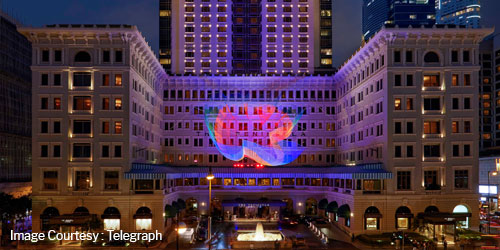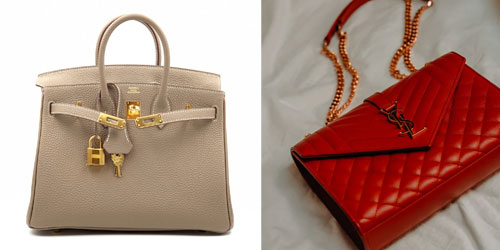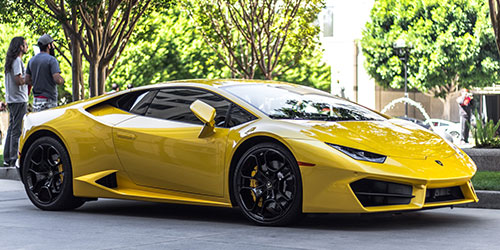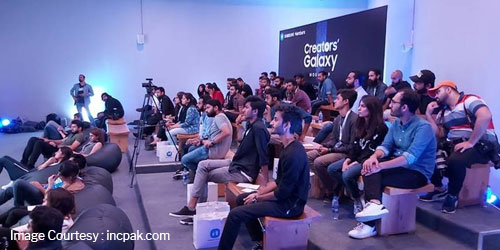The Evolution of Luxury
- 8th Jun 2020
- 3067
- 0

From Owning to Being
The luxury market is grand and flourishing every day. But the rules for its growth are changing. Innovations in technology are leading to cutting-edge developments in the lifestyle promoted by the businesses of extravagance. Luxury is moving beyond its “hefty-price tag” representation - changing into something more meaningful, unfolding and establishing itself as an entity with a purposeful essence.
The new clientele for luxury - millennials and Gen Z - along with modernized science are driving this evolution. The widespread internet penetration and its thriving nature has made luxury accessible. The ease and convenience of acquiring gratifying experiences are the new model for comfort. Digitalisation and the authority of social media influencers on luxury branding has aided in the dawn of a new era - one that puts emphasis on satisfying emotional connections. Today, it is more than the fine product or the rich service as was the classical approach towards luxury. For a luxury brand to be relevant to this new generation of clients, it has to put an effort in forging personal, close bonds that appeal to their value-conscious identities.
The Evolution seen through a few Luxury Verticals
The Luxury Hotel Industry
The way people travel has transformed over the past decade. The glamour of the luxury vacation in a five-star hotel with lavish suites, intricate designer interiors and chandeliers and the plush red carpets is now changing. New forms of unconventional luxury accommodation such as “glamping” - roomy canvas tents with splendid beds, fine furniture and overhead lighting - are expanding the luxury hotel industry. As travelling has become more spiritual in nature, luxury is perceived in authenticity, not just opulent extravagance.

“Travelers want to get under the skin of a destination and truly understand the culture,” says The Peninsula Hotels’ Director of Marketing and Communications, Carson Glover, “but touristic activities often fail to reveal the true nature of a city.”
With a change in ideology, the hotels have had to introduce new services that endeavor to offer the travelers what they seek. The luxury hotel industry curates elite original, local experiences that are tailored to their guests’ expectations. Delivering services according to the current trends (set often by social media travel influencers) with a high level of expertise and craft, is a new challenge and opportunity that the industry is making the most of!
The Luxury Fashion Industry
High fashion brands like Chanel and Hermès are daring to move out of the traditional “luxury house” image into a more novel, contemporary skin. With the new clientele in the pursuit of authenticity and ethical impact, a lot of conventional approaches to fashion luxury have been revamped and refreshed to accommodate these new changes. With the advent of “Positive Luxury,” an advanced revolution is occurring - one that promotes sustainability.

Christian Dior, a part of LVMH group, is endeavoring to protect people and the planet with measures that minimise water and energy usage and the emission of greenhouse gases. The sustainable fashion brand, Stella McCartney, advocating the resale of luxury products is another example of the altering definition of luxury.
One of the biggest shifts in fashion luxury, however, would be the advocacy to end animal brutality. Exotic animals’ skins and fur have long been staple elements used in the creation of luxury clothing. Gucci’s controversial Panda Collection - a new fashion line made from real Panda fur - released in 2017 through social media enraged the public and garnered severe backlash for the brand. Three weeks later, Gucci revealed that it had, with Fur for Animals, tricked the world into caring. The fashion line was a sham - it was created with artificial fur to make people realise how cruel fur is. Gucci also declared that it was ending real fur fashion.
The Luxury Automobile Industry
While engineering a luxury automobile, the brands used to generally create a model and it used to be shipped globally. With the changing times, luxury cars are now being customised according to each market’s distinct preference. In the US, it’s the driving performance that’s considered to be the first preference. However, in Europe and China, the powertrain mechanism garners most preference. The easy-to-access, global nature of the internet has also aided the evolution of the industry. The importance given to digital personality of luxury cars stems from the fact that around 73 per cent of luxury car buyers start their buying journey online, compared to 62 per cent of mass-market customers.

One of the other evolutionary characteristics of the reborn luxury brands include the emphasis on the new benchmarks of connectivity and design over the traditional lap time records used to judge a luxury car. A study by McKinsey and Co. reveals that in every 3 luxury car buyers, 2 have opined that they will buy a model with better connectivity features. According to the study, 90 per cent of automotive experts and executives expect that interior features like display screens, space and usage of high-end materials will have more impact on the luxury car market than on the mass market.
The most substantial modification will be the upgradation to the EV technology. Strict regulations to reduce emissions are enabling the growth of electric cars. The governments across the world are imposing stringiest policies for the automakers. The European Union has established an emissions-cutting target of 37.5 per cent by 2030. Chinese government too aims 25 per cent of its total vehicle sales in electric vehicles by 2025. These policies have inspired the German luxury carmaker Audi to launch its new project Artemis, which aims to make the electric car development process more efficient. Audi plans on bringing the luxury electric cars on road as early as 2024, under Artemis.
Key Indicators of the Evolution
Although tracing the evolution of all verticals of luxury is an arduous task, determining certain elements that have pioneered this evolution is achievable.
Thoughtful luxury
An emergence of “thoughtful luxury” is one of the indicators of the luxury market’s steadfast evolution. Maybach’s “Circle of Excellence” is an exclusive membership program that conducts unique events such as joint tours or test drives with new vehicles. The membership provides opportunities for automobile connoisseurs to connect personally with Mercedes-Maybach artistes, and offers insights into Mercedes-Benz production locations. This manner appeals to their customer’s interest in cartography and allures them to invest their intelligence into the luxury brand’s heritage.
Experiential emphasis

Where exclusivity and coveted craftsmanship were enough to assuage the sense of luxury, today, luxury brands have to appeal to all the senses of a client - appeal through more than just their product or service. Brands have to construct an entire new milieu in which the customers may be able to completely immerse themselves. Samsung’s “Experience Stores” are built to raise engagement with their (potential) clientele. The availability of 4D VR glasses that take the customer on a roller coaster ride or blast them off to outer space generate greater engagement. Exclusive “Galaxy Workshops” organised at these stores are popular with the participants on social media with the #DoWhatYouCant. Gaming rooms and certified Samsung Care are other two touchpoints for the brand to affiliate with its customers.
Personal transformation
As explained above, the new luxury mindset is about the experience, not the brand. One key takeaway that the modern luxury customer wants is personal growth and development. The question is “how does this purchase help me find myself?” Luxury is more than just a status symbol as it has been forever perceived. It is a symbol of self-growth, self-improvement, for this generation of clientele. Gucci, whose revenue topped €8bn (£7bn) for the full year 2018, has taken advantage of the digital shift and devoted itself to the creation of a splendid digital image through its social media handles, website and mobile application. The communication that the brand drives is very heartfelt, engaging with today’s customers. The ideas of self-expression and freedom asserted through its designs and creatives are chosen, absorbed and followed by the youth which forms its audience. For them, wearing the iconic brand is reflection of their own individuality, a distinct action translated through their thoughts.
Conclusion
The evolution of luxury is guided by the principles mentioned above. Luxury is no longer about “owning” a prized possession. It’s about “being” a symbol of status. It’s about choosing the brands that echo one’s identity.
 Rajeshwari Patwardhan
Rajeshwari Patwardhan


Comments
No comments yet.
Add Your Comment
Thank you, for commenting !!
Your comment is under moderation...
Keep reading luxury post